🏁 Productivity
✦
Nov 21, 2024
✦
7 min read
If there’s one thing many people get wrong, it’s the concept of “productivity.” A term that’s often used to sell courses or promote an unrealistic lifestyle. So today, let’s tackle this head-on and finally break the myths around productivity.
Do you think you’re truly productive or just busy? 🤨
That’s kind of the million-dollar question. Online, you’ll find all kinds of stuff when it comes to productivity. “Experts” say that if you can’t juggle, respond to emails, and do a 10k run simultaneously, you’re not productive. Others will tell you that if you can’t pack 39 hours of work into 3 hours flat, you’re not productive either.

So… what is true productivity? Don’t worry; we’re here to bring some clarity to it all. As always, we scoured the internet to find the best reads, scientific reviews, and expert advice to help you break the myth and become truly “productive.”
Misunderstandings About Productivity
#1 – Productivity is About Doing More
The first misconception around productivity is the idea that to be productive, you need to get an insane number of things done. That the more you do, the more productive you are. But that’s wrong.
Life isn’t a race where the goal, like in a Mario game, is to collect as many coins as possible to prove you’re super good. No one’s going to ask you to “prove” your excellence by quantity at the end of the day. Quite the opposite.
Productivity is about being able to complete simple tasks but in-depth. Doing 3,000 things at once won’t help you develop any real expertise. At best, you might learn something, but most of the time, you’re just skimming the surface—barely touching the essence of tasks and concepts.
Being productive is, therefore, the ability to do fewer tasks but acquire real expertise and apply it effectively. For example, if you’re preparing a financial report, it’s better to focus on that one report with deep, well-researched analysis and solutions for the issues raised rather than making 35 reports with poorly handled data, cluttered text, and little real analysis.
#2 – Multitasking Increases Efficiency
The art of multitasking: a big topic. Many people believe that doing tons of things simultaneously shows productivity. “I’m doing lots of things; I have a brain that can handle several tasks at once, so I’m fast.”
But here’s what science tells us: the brain is simply not wired to handle multiple tasks at once.
"Based on over a half-century of cognitive science and more recent studies on multitasking, we know that multitaskers do less and miss information. It takes time (an average of 15 minutes) to re-orient to a primary task after a distraction such as an email. Efficiency can drop by as much as 40%." — Paul Atchley, Ph.D. is an associate professor of Cognitive Psychology at the University of Kansas.

The brain has limited capabilities, varying from person to person but still bounded. And no amount of training will make you superhuman. Those who think they can multitask are actually victims of cognitive bias. Scientists are clear on this:
"In fact, multitasking is almost always a misnomer, as the human mind and brain lack the architecture to perform two or more tasks simultaneously. [...] when we attempt to multitask, we are usually switching between one task and another. The human brain has evolved to single task." —Madore, Wagner
Multitasking simply isn’t biologically possible. It’s a myth. And this myth can even be dangerous—for us and others. When the brain is “doing multiple tasks at once,” it’s really just quickly switching between tasks. It has to pick between its options, reducing focus on one over the other, which can be risky: like talking on the phone while driving, typing an email in a meeting, or texting while cooking…
#3 – Long Hours Mean High Productivity
The third mistake is thinking that putting in long hours means you’re very productive. In some cultures, leaving work early is frowned upon. In Paris, for instance, if you leave the office before 7 PM, someone’s bound to ask—sarcastically—if you’re taking the afternoon off. A culture where long hours equal high productivity. But in other cultures, like Canada, working extra hours is frowned upon: it suggests poor time management and, ultimately, low productivity.
The truth is closer to the second perspective. You should assess the time needed for each task and aim to stick to it. Spending 10 minutes on something that was estimated to take 2 hours isn’t ideal, but spending 4 days on it isn’t great either. This phenomenon is called the Pareto principle, which we discuss in detail in this article.
Moreover, piling on hours of work doesn’t bring long-term benefits: physical exhaustion, mental fatigue, and, for some, it can even lead to burnout.
#4 – Technology Automatically Makes Us More Productive
With the rise of generative AI and one-click optimization tools, it seems like they’d make us ultra-productive. Well, yes and no.
According to a recent study, generative AI and associated tools can indeed boost productivity (helping to get things done), but they don’t always have “positive” effects.
"[...] The researchers observed a performance decrease because people would “kind of switch off their brains and follow what AI recommends” — Meredith Somers
The issue here is that people tend to lose their critical thinking skills. If humans are overly “guided” or assisted, they start treating recommendations as absolute truths—forgetting to question or verify them.

So, if technology may seem to help productivity, it can actually waste time or weaken our mental abilities. You spend time setting up the model, tweaking queries repeatedly, and when you get a result, you accept it as truth. But if AI is wrong, wouldn’t you end up redoing the task?
“Students in STEM majors were particularly concerned about accuracy, “accuracy matters in my field, and I’m not always confident in the accuracy of information provided by ChatGPT.” […] Students recognize that generative AI is not neutral and that it can perpetuate existing societal biases, leading to outputs that may be discriminatory or offensive.” — Baek, Tate, Warschauer
According to this study, participants are worried about the data quality and “neutrality” on which these AI tools are trained, as it can affect their responses. So, rushing to go fast can sometimes be counterproductive if you end up rechecking every answer from your virtual assistant. Might as well think it through yourself.
#5 – Constantly Striving for Motivation Leads to Productivity
The last big productivity myth is about motivation. To be productive, people believe they need constant motivation for their tasks and goals. But this chase for motivation is often unrealistic.
Productivity experts, like James Clear, talk more about discipline. They emphasize that life includes tasks that aren’t always exciting or stimulating. But that doesn’t mean they’re not worth doing or are less important than others.
Motivation mainly comes after effort, like a reward—not the other way around. We dive deeper into this in our full article on motivation.
So: How to Be Really Productive?
To avoid these common productivity pitfalls, here are some key strategies:
📆 Plan Your Time Wisely
For each task, assess the resources—both materials and time, needed, and then tackle the project. There are well-known methods for this, and if you’re curious to learn more, read this article on effective solutions to boost productivity.
☝️ Do One Thing at a Time
As explained, multitasking just isn’t possible. Instead, focus on organizing. Two popular methods to try:
Time Blocking: Blocking time slots: Imagine making appointments with yourself. During these times, force yourself to be 100% focused, just as you would in a meeting where you have an important issue at stake. To help you, you can block these slots in your diary.
The Eisenhower Matrix: Utilize the Eisenhower Matrix to categorize tasks into four quadrants: important and urgent, important but not urgent, urgent but not important, and neither. Prioritize tasks in alignment with this matrix.
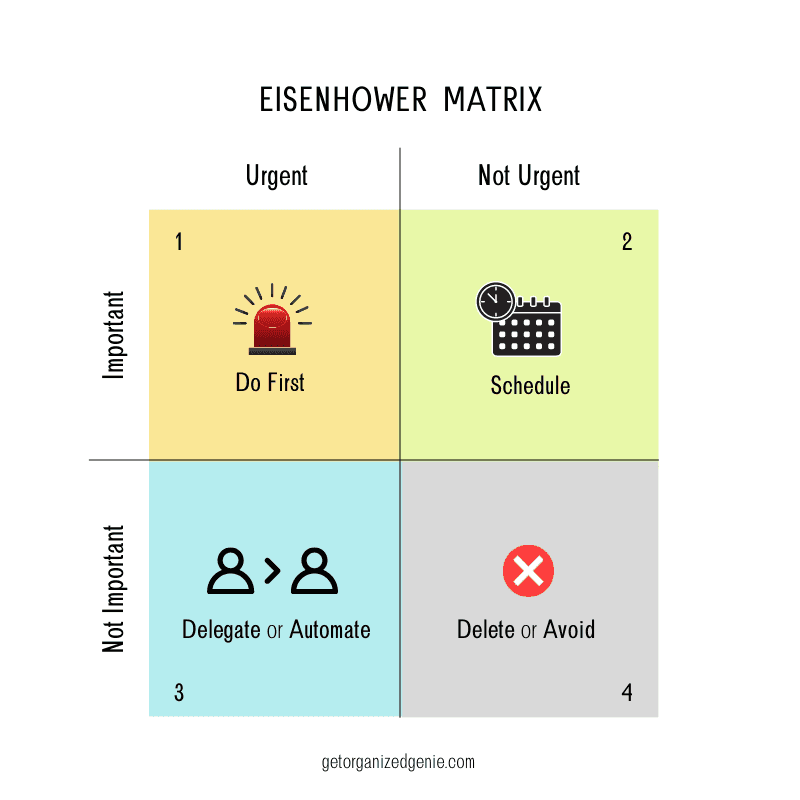
🔗 Source
⏲️ Limit Certain Tools
Some tools can be incredibly useful, but they can also slowly drain our mental abilities, making us lazy. So, it’s good to set limits on how much time we spend with them. This way, we keep control over both time and the number of times we use them each day—and it forces us to think on our own, like the good old days.
You can use the Jomo app, available free for iPhone, iPad, and Mac, to block apps and websites across all your devices. On Mac, you can even block specific keywords. If you find yourself reaching for ChatGPT all too often and want to curb your usage, you can block the website, app, or even the keyword #chatgpt.
On iPhone
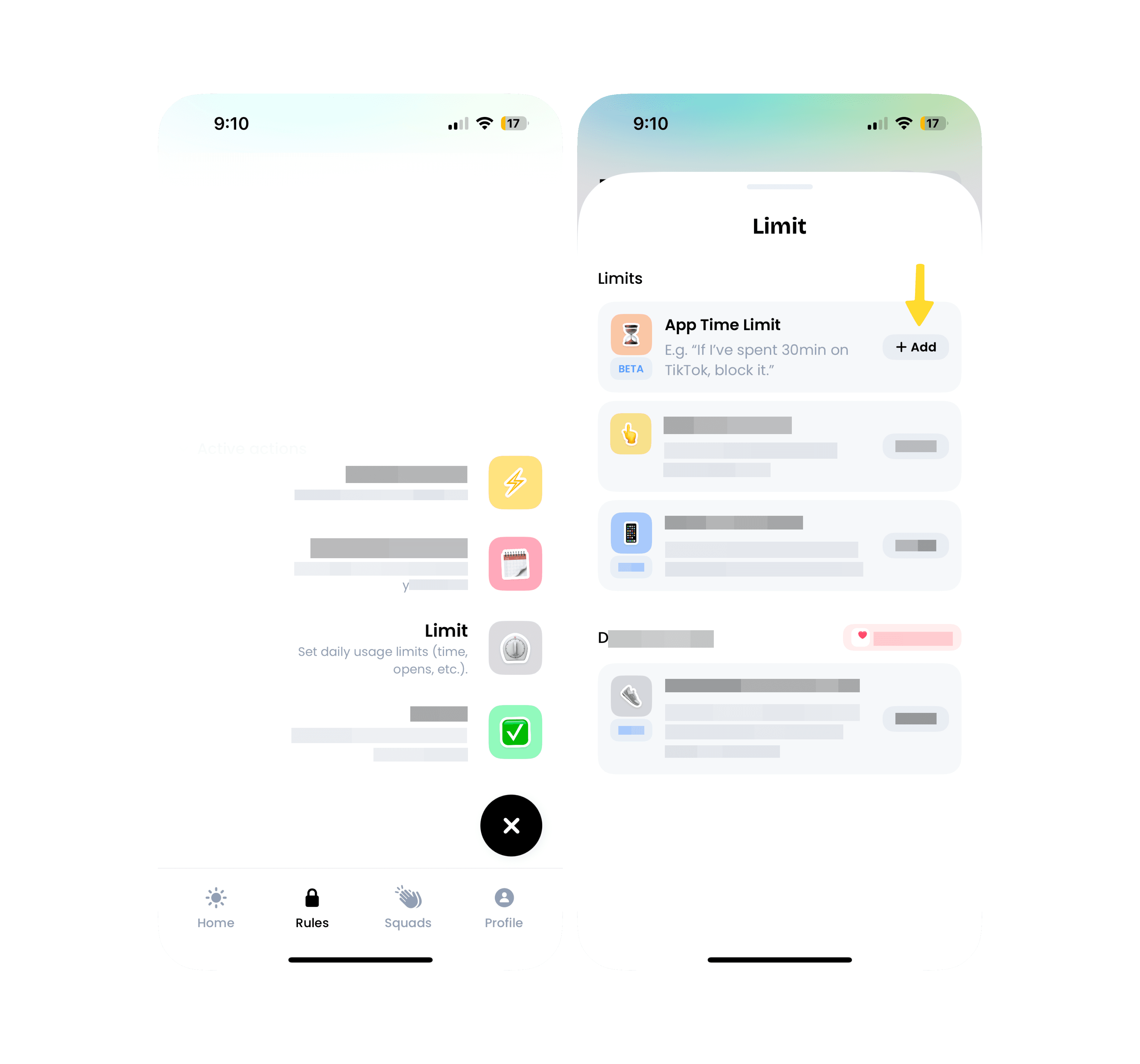

On Mac
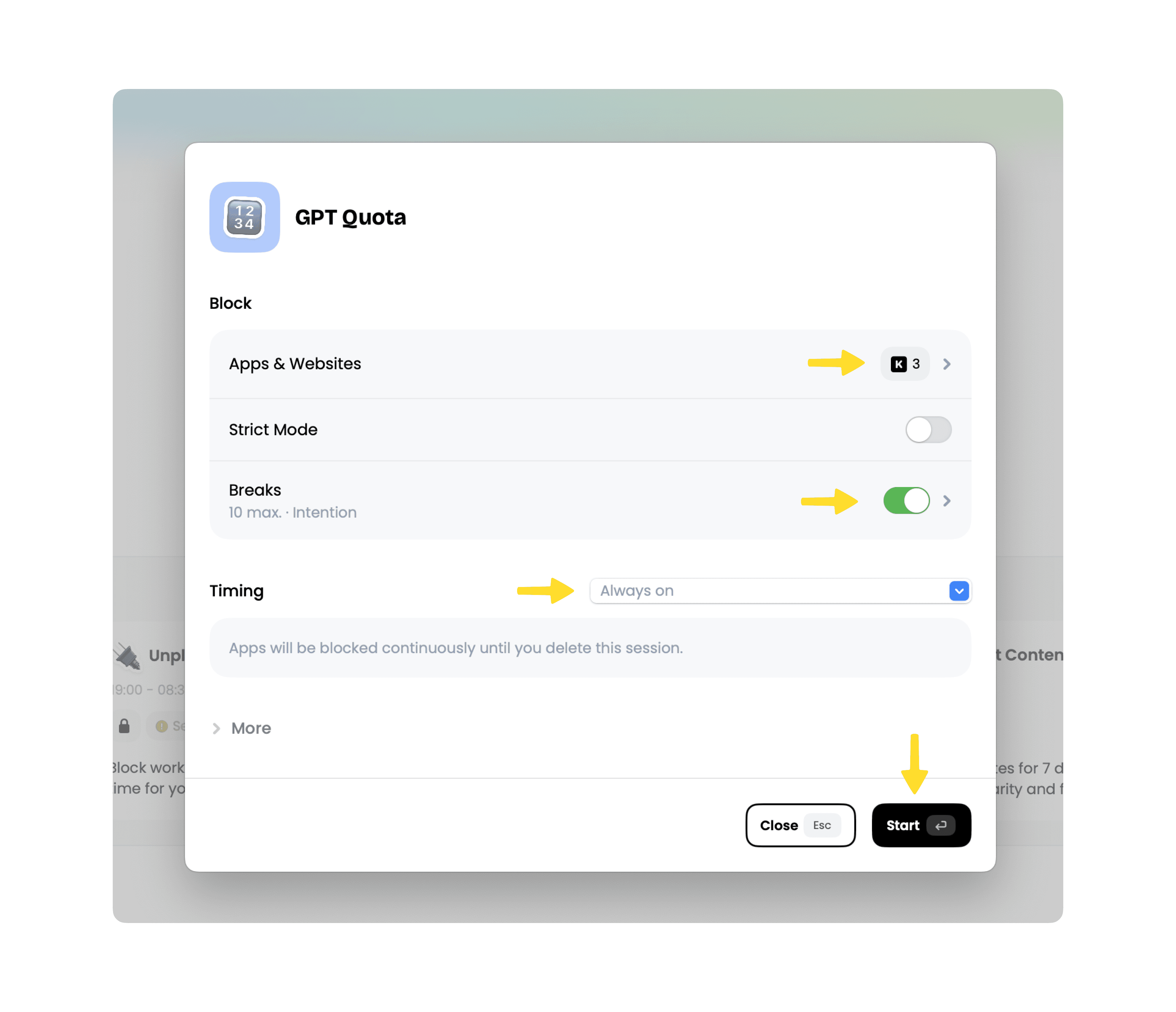
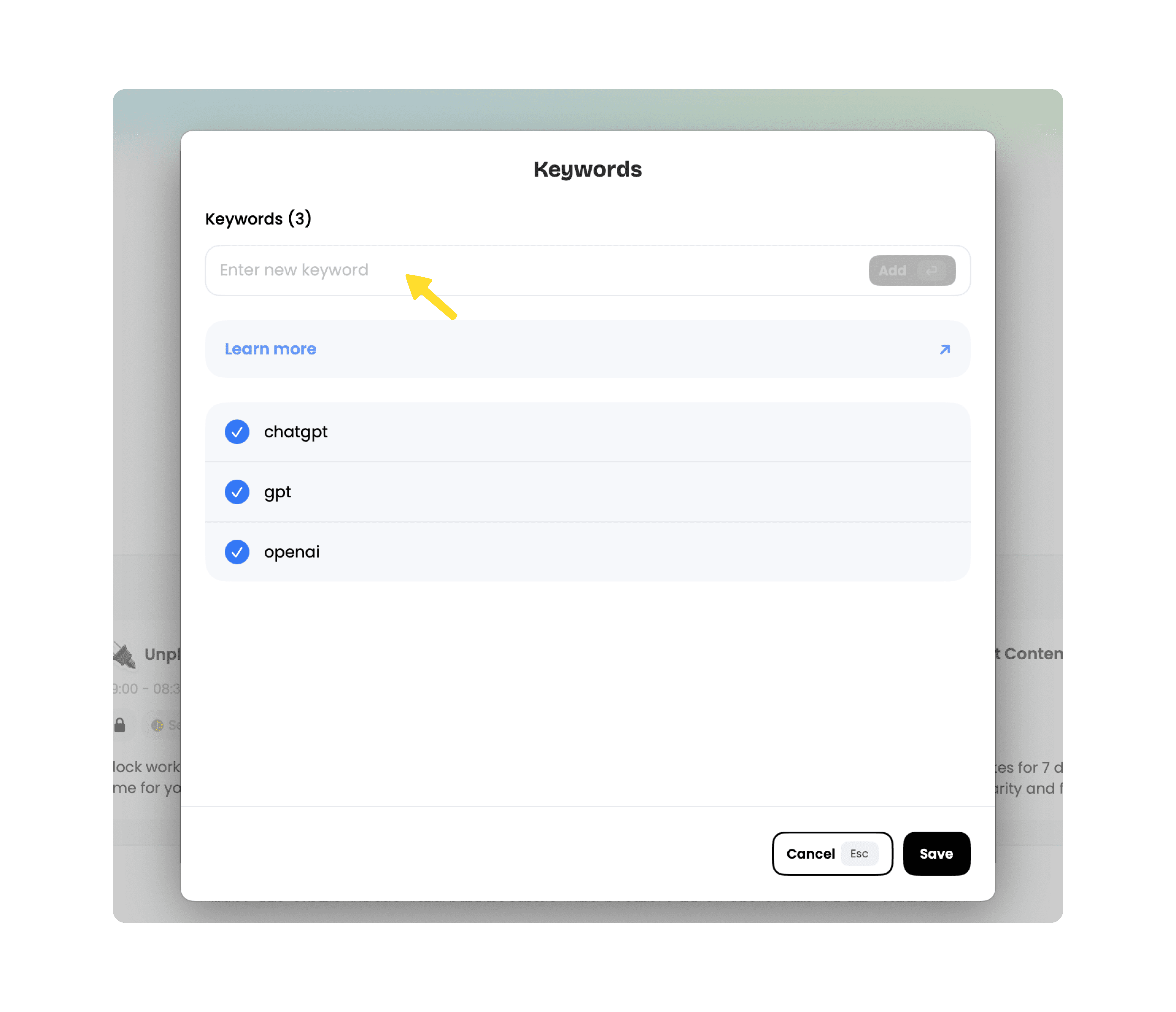
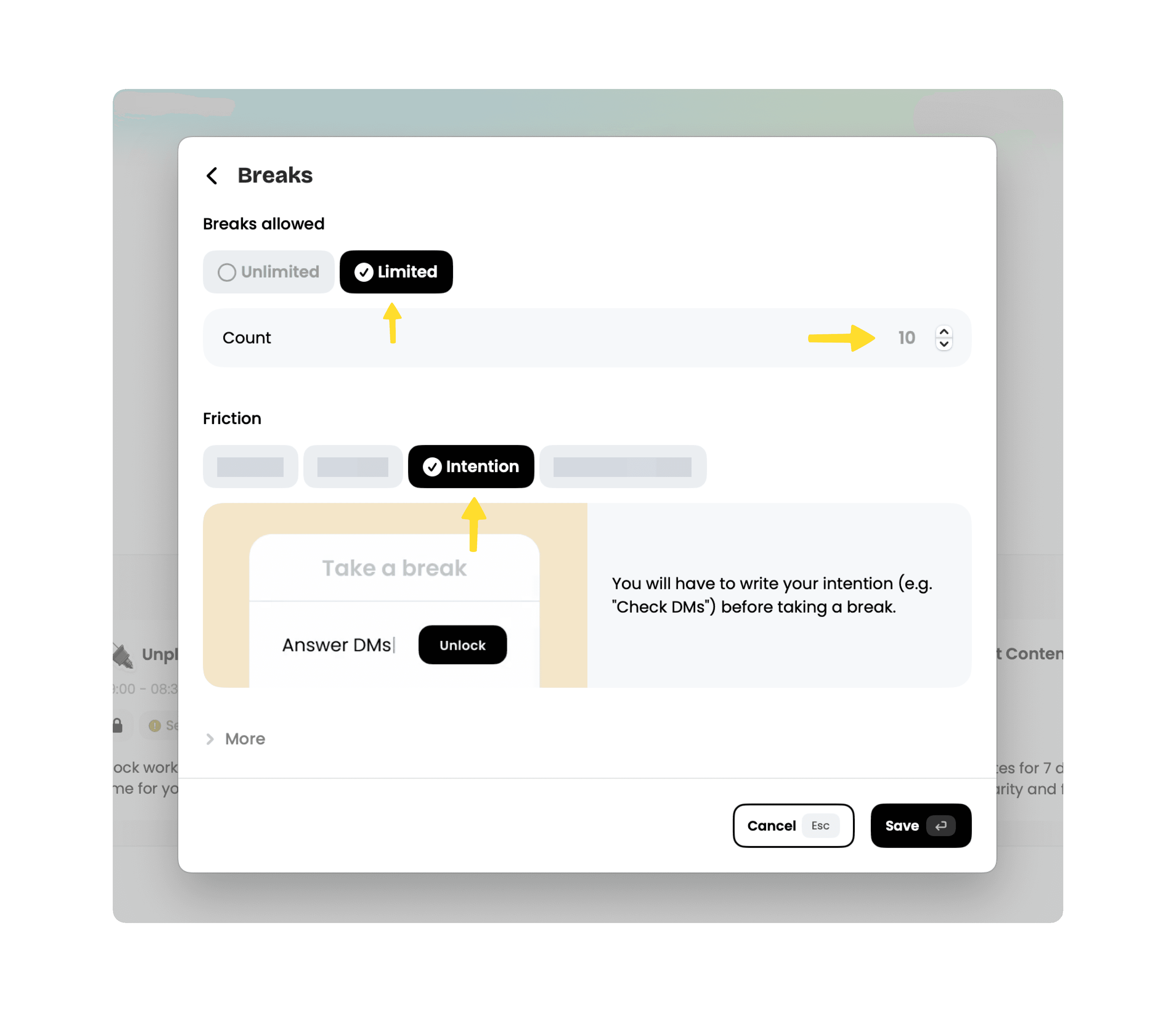
🔒 Block Out Distractions
One of the well-known enemies of our productivity is our phone: with calls, messages, notifications, and social media, it’s easy to be tempted to spend a few minutes here and there on it. Except that, according to studies, a brief interruption like this makes us lose an average of 23 minutes. Because once you're distracted, your brain has to start all over again (that "where was I?" moment might sound familiar, right?).
So to avoid creating real time black holes, we suggest installing an app blocker right away! For that, you’ve got the most comprehensive iOS app, Jomo, available for free on iPhone, iPad, and Mac. You don’t need to be a phone pro; everything is designed so you can easily regain your time and focus with just a tap. Check it out—we’ll show you everything:
Go to Rules > + > Quick Session
Select the apps you want to block, then tap "Start."
That’s it — yes, really. See? That wasn’t hard!
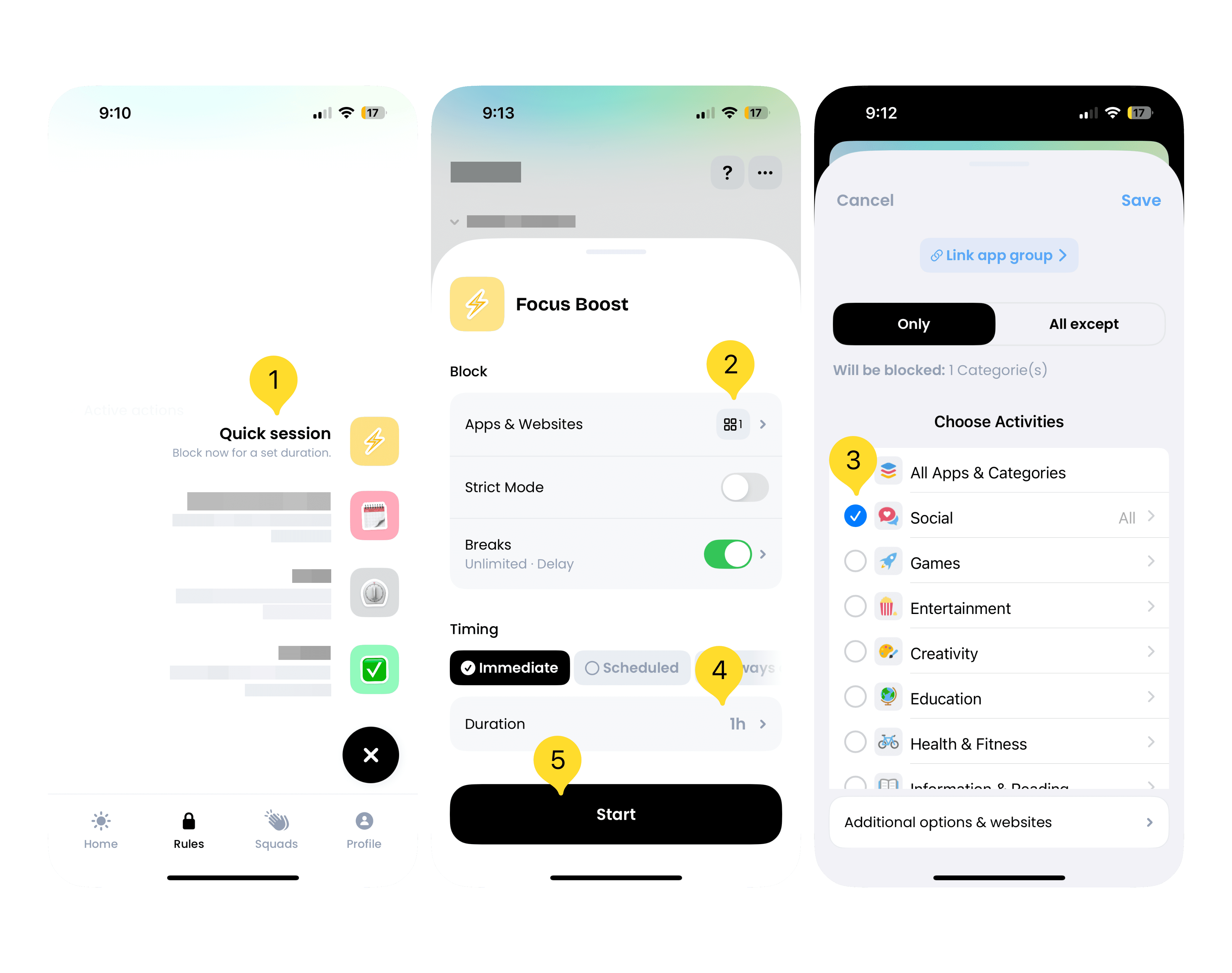
💪 Challenge Yourself Without Losing Motivation
When we decide to make a change, we often set the bar too high, thinking a bigger challenge will drive more motivation. But in reality, if you don’t hit those goals fast enough, instead of getting motivated, you might end up losing it.
“You do not rise to the level of your goals. You fall to the level of your systems.” — James Clear
For instance, if you want to start exercising, avoid vague goals like “I’ll run three times a week.” Instead, set up specific, actionable steps. For more on motivation, check out our full article.
Voilà! That wraps up this article. We hope it’s helped you better understand what productivity really is and how easy it can be to make mistakes while thinking you’re on the right track. If there’s one takeaway, it’s that productivity as just being “busy” is a myth spread by influencers often to sell courses or “magic” solutions. As we discussed in this article, those magic hacks are usually all fluff!












